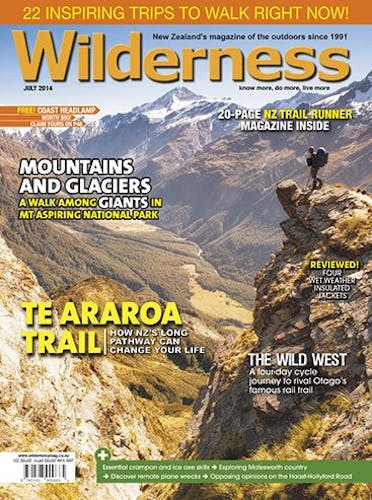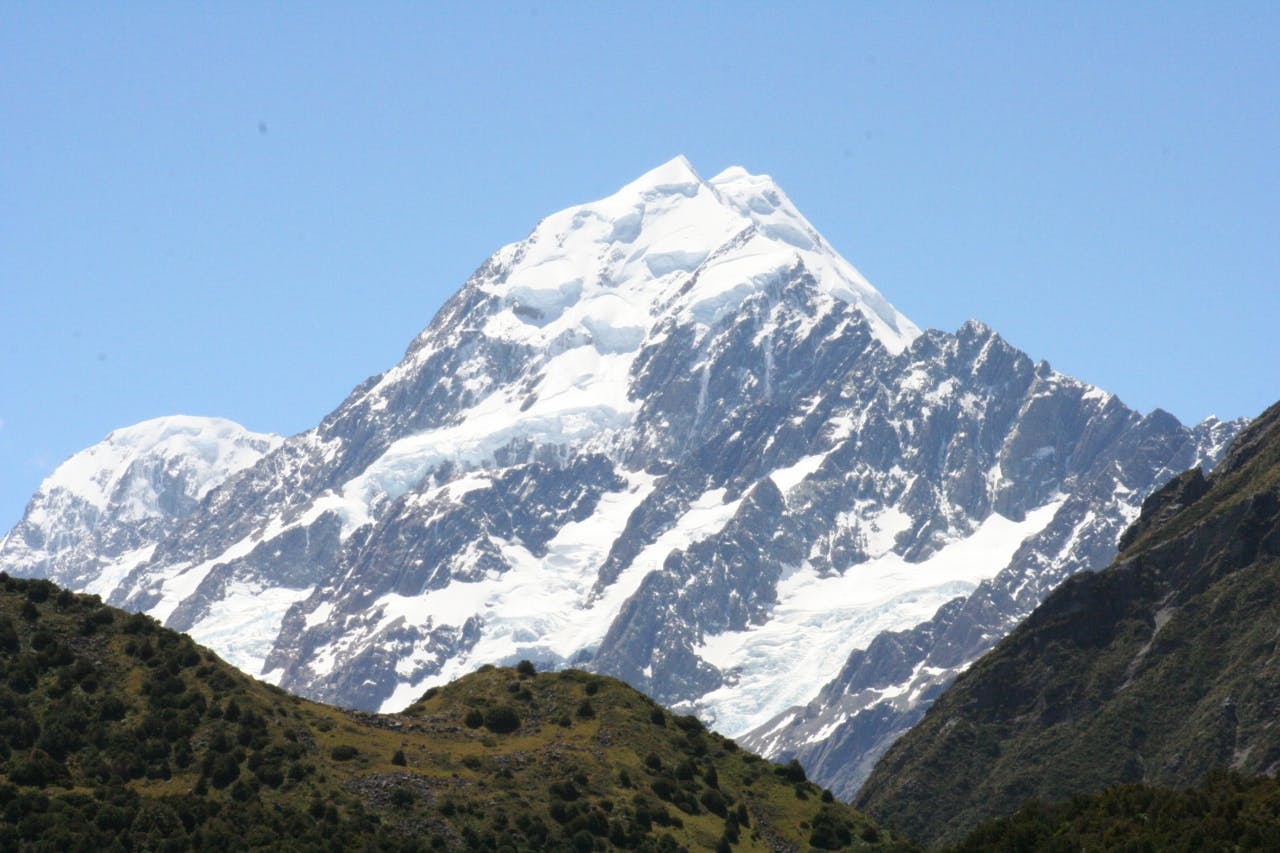Mick Abbott reflects on how his successes – and failures – in the mountains have shaped his understanding of his place in the world
It’s a thrill, on my regular drive from Banks Peninsula into town, to look across Lake Ellesmere, the foothills of the Southern Alps covered in the first decent belt of wintry snow.
Mt Somers in the south, then across to the Rakaia and Waimakariri gorges, and north to Mt Oxford. The mountains lying behind them have a strange pull that continues to make me restless. Indeed, while it’s easy to laugh at the stupidity of thinking the hills might be calling, there are days when I’m certain they are.
As for many people, climbing Aoraki/Mt Cook has long been a fascination for me, not just because it is the tallest peak in the land, but in many ways the most awe-inspiring. As Samuel Butler wrote of his climb onto the Two Thumb Range near the Rangitata in 1860: ‘I saw snowy peak after snowy peak come in view as the summit in front of me narrowed… Suddenly, as my eyes got on a level with the top, so that I could see over, I was struck almost breathless by the wonderful mountain that burst on my sight.
‘The effect was startling. It rose towering in a massy parallelogram, disclosed from top to bottom in the cloudless sky, far above all the others… Indeed, I am not sure that Mount Cook is not the finest in outline of all the snowy mountains that I have ever seen. It is well worth any amount of climbing to see. No one can mistake it. If a person says he thinks he has seen Mount Cook, you may be quite sure that he has not seen it. The moment it comes into sight the exclamation is, “That is Mount Cook!” … There is no possibility of mistake.’
Aoraki is not just our tallest peak, but in Middle Peak and Low Peak also our second and third highest as well. Between the three is a 1.6km-long ridge from which are draped exposed faces and ridges that continue to challenge climbers.
My first attempt on Aoraki was with Martin. We rolled up Ball Road in my first car, loaded with too much gear and not enough experience, we spent all day only getting as far as Kings Hut and next morning when we made it to Plateau Hut, we were tired and had lost the advantage of a full rest day. I spent the remainder of that day looking across at our intended route – Zurbriggen Ridge – psyching myself out as I watched it steepen in my mind, such that when our alarms woke us at 2.30am we decided to leave it, and instead head back down.
The second go was with two climbers from America and Germany I had met at Unwin Hut in Mount Cook Village. Our attempt ended even before we made it to Hooker Hut with the German, nervous in his crampons, down a crevasse and requiring an awkward rescue by us. A few days later, this time with Mark from South Carolina, we made it up to Plateau before poor weather sent us back.
Some years later it was up to Empress Hut with Andy, and the idea of heading for the top via the Sheila Glacier. Andy’s a brilliant climber, but I’m not, and now as I look at images of the intended route I’m grateful for the experience of just getting to the start of the route proper. I was back a few years later, again with Andy, and we got to Porter Col, near Low Peak. But we were not that fast or fit enough, the Grand Traverse evaporated, and we turned back disheartened even before making the Summit Ridge.
My final attempt was again with Andy, and this time we flew into Plateau on a good forecast, and a desire to make it to the top by the easiest means possible. Not that Andy needed to bag the peak. Before we’d flatted together he’d already done a lightening ascent of Cook’s most imposing route, the Caroline Face. It was more that we had a good time hanging out, and Andy humoured the gap between my climbing skills and ambitions.
It was a powerful experience when I realised, just past the Summit Rocks, I was definitely going to make the top.
The sense of exposure was immense, as below, in every direction, the South Island played itself out. I remember not wanting to stand on the very top, nor have a photo – everything about the place and the experience felt indelibly seared to my core.
The last time I went climbing proper was again with Andy – up Mt Brewster in late winter. There was a point, as we left the ridge and sidled towards easier travel that things seemed different – a bit like a conversation you’re half listening in on, but not able to make any sense of.
Then a crack in the snow just a metre away, and the realisation we’re sliding down the face. Above us, in slow motion, fridge sized blocks of fresh packed snow came tumbling down on top of us.
There was time for a quick desperate conversation. Andy snatched safety by wrapping himself around a prominent rock. I was swallowed by the avalanche. At times, at the bottom of the flow, I could push hard against the solid mountain to pop up like a cork for a breath. And then tumbling, lost. Chaos.
Then it stopped. I was buried with a face-full of snow, without any sense of up or down. Half a minute later the weight of more snow arriving set it off again, sending me with it over some small bluffs, rocks raking hard against my femur, before miraculously I was spat out the side of a chute while the avalanche tumbled down a ravine in the general direction of Fantail Falls.
Then silence, in a cloudless, perfectly blue day.
After the avalanche, there was not much to say – just a deeper understanding of our place in this landscape.
Looking out over Lake Ellesmere, I realise how much more I know these mountains than for their summits. These ranges are talismans – something magical and sheltering – with which to mark my few years against the many millions they have taken, in their slow rise out of the sea, to form the remarkable spine that is the Southern Alps.
A place with an overpowering presence, scale and complexity that will always remain. Truly breath-taking.







